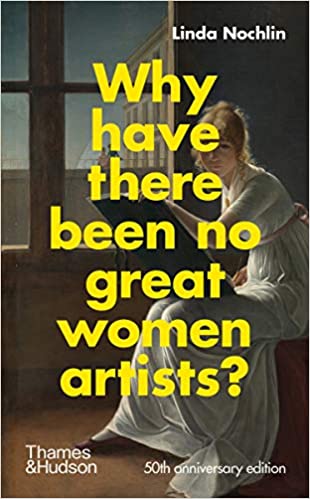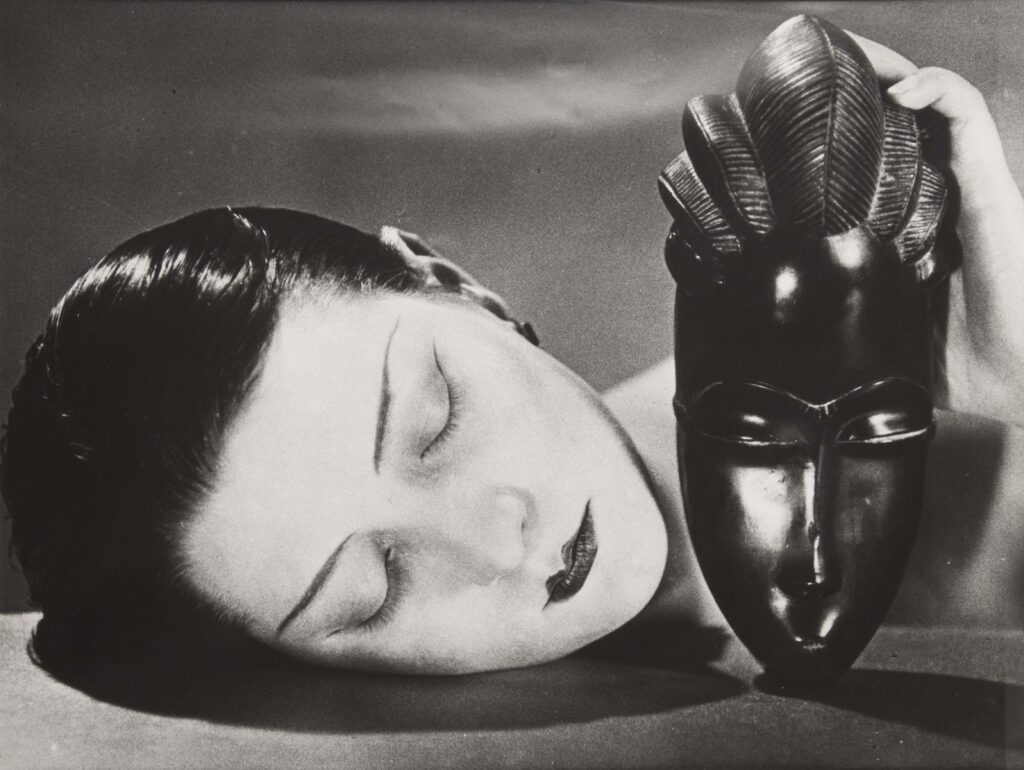Traditionally, far too many women have been overlooked, ignored and airbrushed out of art history. Most people will have heard of Henri Matisse and Andre Derain. But what about the female Fauve, Émilie Charmy, recently given a superb show at Connaught Brown? Narratives are undoubtedly changing – inside museums and galleries, across academia and even within the art market. Just look at recent record-breaking auction prices for women artists such as Frida Kahlo. There are also an increasing number of feminist art books rescuing the story of art from patriarchal perspectives and replacing it with a very different side to the story. As I spent the last year researching art history’s unsung heroes for my first book, ‘Muse’, I came across some fantastic revisionist accounts. I thought I would share some of the best books I discovered, which celebrate the incredible input of women from the Renaissance to today. So, here are 10 essential feminist art books for your shelves.

A Little Feminist History of Art
This book is a great place to start. It is a short and pithy introduction to some of the most important artworks borne out of the and the feminist art movement. Fifty outstanding works from the late 1960s to the present reflect women’s lives and experience, as well as the changing position of women artists, and reveal the impact of feminist ideals and politics on visual culture. Exploring themes such as gender inequality, sexuality, domestic life, personal experiences and the female body, it is a celebration of one of the most ambitious, influential and enduring artistic movements to emerge from the twentieth century.

Artemisia
I just love this beautifully illustrated, coffee table book on Baroque painter, Artemisia Gentileschi. Published in conjunction with the fantastic ‘Artemisia’ show at the National Gallery, it includes essays on her life and career; a summary of critical writings and an overview of the wide range of approaches to Gentileschi’s work since her rediscovery by feminist art historians more than 50 years ago; a more personal insight into the painter through her letters; a discussion of the artist’s self-representation in her work; and an essay dedicated to her painting technique. An enriching account of an extraordinary woman, who overcame so much to become an enormously successful artist.

Why Have There Been No Great Women Artists?
Linda Nochlin’s seminal essay on women artists is widely acknowledged as the first real attempt at a feminist history of art. Nochlin refused to handle the question of why there had been no ‘great women artists’ on its own, corrupted, terms. Instead, she dismantled the very concept of ‘greatness’, unravelling the basic assumptions that had centred a male-coded ‘genius’ in the study of art. In this stand-alone anniversary edition, Nochlin’s essay is published alongside its reappraisal, ‘Thirty Years After’. Written in an era of thriving feminist theory, as well as queer theory, race and postcolonial studies, ‘Thirty Years After’ is a striking reflection on the emergence of a whole new canon. With reference to Joan Mitchell, Louise Bourgeois, Cindy Sherman and many more, Nochlin diagnoses the state of women and art with unmatched precision and verve.
Posing Modernity: The Black Model from Manet and Matisse to Today
Featuring over 175 illustrations, Posing Modernity illuminates long-obscured Black sitters from across art history. It proposes that a history of modernism cannot be complete until it examines the vital role of the Black female muse within it. It starts by examining the legacy of Édouard Manet’s Olympia (1863), arguing that this radical painting marked a fitfully evolving shift toward modernist portrayals of the Black figure as an active participant in everyday life rather than as an exotic “other.” Murrell also traces the impact of Manet’s reconsideration of the Black model into the twentieth century and across the Atlantic, where Henri Matisse visited Harlem jazz clubs and later produced transformative portraits of Black dancers as icons of modern beauty. The book concludes with a look at how Manet’s and Matisse’s depictions influenced Romare Bearden and continue to reverberate in the work of such global contemporary artists as Faith Ringgold, Aimé Mpane, Maud Sulter, and Mickalene Thomas.

Great Women Artists
Great Women Artists is a classic. The most extensive fully illustrated book of women artists ever published, it reflects an era where art made by women is more prominent than ever. In museums, galleries, and the art market, previously overlooked female artists, past and present, are now gaining recognition and value. Featuring more than 400 artists from more than 50 countries and spanning 500 years of creativity, each artist is represented here by a key artwork and short text. This essential volume reveals a parallel yet equally engaging history of art for an age that champions a greater diversity of voices.

This Dark Country: Women Artists, Still Life and Intimacy in the Early Twentieth Century
For women artists in the early twentieth century, including Ethel Sands, Nina Hamnett, Vanessa Bell and Gwen John, who lived in and around the Bloomsbury Group, this art form was a conduit for their lives, their rebellions, their quiet loves for men and women. Gluck, who challenged the framing of her gender and her art, painted flowers arranged by the woman she loved; Dora Carrington, a Slade School graduate, recorded eggs on a table at Tidmarsh Mill, where she built a richly fulfilling if delicate life with Lytton Strachey. But for every artist we remember, there is one we have forgotten; who leaves only elusive traces; whose art was replaced by being a mother or wife; whose remaining artworks lie dusty in archives or attics. In this boldly original blend of group biography and art criticism, Rebecca Birrell brings these shadowy figures into the light and conducts a dazzling investigation into the structures of intimacy that make – and dismantle – our worlds.

The Mirror and the Palette: Rebellion, Revolution and Resilience: 500 Years of Women’s Self-Portraits
In this uplifting book, Jennifer Higgie introduces 20 women artists who used self-portraiture as a powerful tool. She gives fresh insights into brilliant artists such as Frida Kahlo, Loïs Mailou Jones, Amrita Sher-Gil, Suzanne Valadon, Gwen John, Artemisia Gentileschi and Paula Modersohn-Becker. Spanning 500 years, biography and cultural history intertwine in a narrative packed with tales of rebellion, adventure, revolution, travel and tragedy enacted by women who turned their back on convention and lived lives of great resilience, creativity and bravery. This is a dazzlingly original and ambitious book by one of the most well-respected art critics at work today.

Modern Women Artists series
I am a huge fan of The Modern Women Artists series. It is an exciting – and growing – list of hardback, pocket-sized books about some brilliant women artists from Laura Knight to Eileen Agar and Marlow Moss. Each little book offers readers a concise introduction to an artist and their work.

Old Mistresses: Women, Art and Ideology
This book is excellent. With a Preface by Griselda Pollock, this edition of a truly groundbreaking book offers a radical challenge to a women-free Art History. Parker and Pollock’s critique of Art History’s sexism leads to expanded, inclusive readings of the art of the past. They demonstrate how the changing historical social realities of gender relations and women artists’ translation of gendered conditions into their works provide keys to novel understandings of why we might study the art of the past. They go further to show how such knowledge enables us to understand art by contemporary artists who are women and can contribute to the changing self-perception and creative work of artists today.

Women, Art, and Society
Whitney Chadwick’s acclaimed study challenges the assumption that great women artists are exceptions to the rule, who ‘transcended’ their sex to produce major works of art. While acknowledging the many women whose contribution to visual culture since the Middle Ages have often been neglected, Chadwick’s survey amounts to much more than an alternative canon of women artists: it re-examines the works themselves and the ways in which they have been perceived as marginal, often in direct reference to gender. In her discussion of feminism and its influence on such a reappraisal, the author also addresses the closely related issues of ethnicity, class and sexuality.

These are just some of the books which I read as part of my research for ‘Muse’, in which I take a look at the concept of the muse from a feminist point of view.
The perception of the muse is that of a passive, powerless model, at the mercy of an influential and older artist. But is this trope a romanticised myth? Far from posing silently, muses have brought emotional support, intellectual energy, career-changing creativity and practical help to artists. ‘Muse’, therefore, tells the true stories of the incredible muses who have inspired art history’s masterpieces. From Leonardo da Vinci’s studio to the covers of Vogue, from Dora Maar to Grace Jones, I uncover the remarkable role of muses in some of art history’s most well-known and significant works.
If you’ve enjoyed reading my blog, please consider ordering a copy of Muse (£12.99) here
Ruth x



